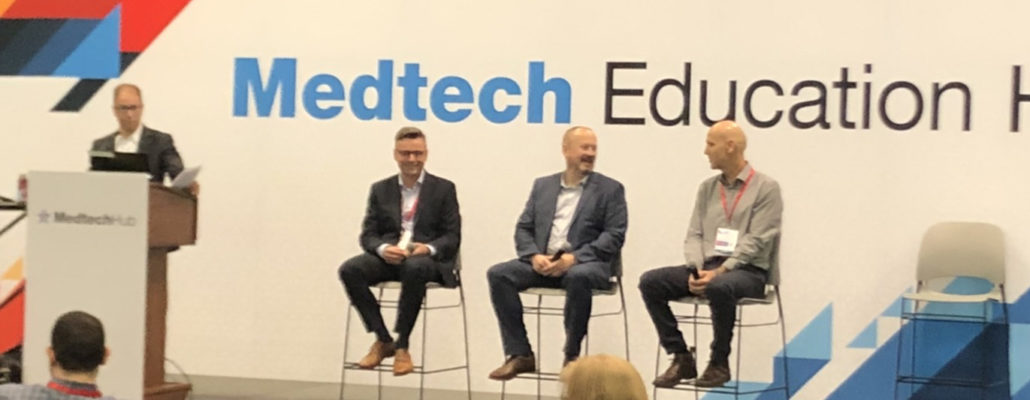Challenges in Combination Product Development
MD&M East Drugs and Devices Panel Recap:

Last week, Insight Product Development had the pleasure of participating in a combination product panel discussion at the Medical Design and Manufacturing Show in New York City. Insight’s Co-Founder and Sr. Partner Craig Scherer was flanked by pharma development executives Michael Noderer and Mathias Romacher. Chris Evans, West Pharmaceutical Services’ VP of Global Innovation did an excellent job as moderator.
Kicking off the discussion, panelists shared a perspective on the distinct differences between medical devices and combination products. With medical products, typically the device provides the therapy/treatment. Within the pharmaceutical industry, the drug is king, while the device is added cost. Therefore it must add value. The onus is then on the device developer to make sure that the added cost for the device also provides significant support for the user and encourages adherence to support better outcomes.
The discussion continued with thoughts on the FDA and the challenges related to submission and approvals for both novel and platform solutions. While the highly rigorous regulatory aspects of combination product development is always a topic of discussion at these conferences, it was great to also see Pharma’s growing focus on supporting users to encourage adherence to develop more appropriate delivery systems. In addition, the group shared insight on the value of research in truly understanding user needs.
The importance of understanding, characterizing and prioritizing user needs is critical to developing novel devices and helping to select platform options. The application of user needs is also valuable in helping to understand the entire delivery system. The device is, of course, of great importance. However, the instructions for use, quick start guides, functional packaging and a variety of longitudinal engagement strategies for initial onboarding and ongoing support can also be leveraged to encourage adherence and support users. In each of these instances, the odds of increasing system value grows as you develop a clearer understanding of user needs along the patient journey.
Connected strategies for combination products were also explored at length. The group agreed—we’re still in the early stages of defining the value of all this collected data. The cloud can provide a plethora of options for collecting and aggregating data, but the ways it’s being done effectively are still being established. The question of the regulatory impact of this information always makes for a lively conversation. Is it used to make treatment decisions or not? On the device end, connectivity is the ability to support users through longitudinal engagement by initially merging connected “add-ons” with related apps to devices and eventually, integrating these solutions into the device itself.
The panel wrapped up with this connectivity conversation and the endless opportunities it can provide. This is especially true when user needs are considered, which ultimately drive design requirements.
